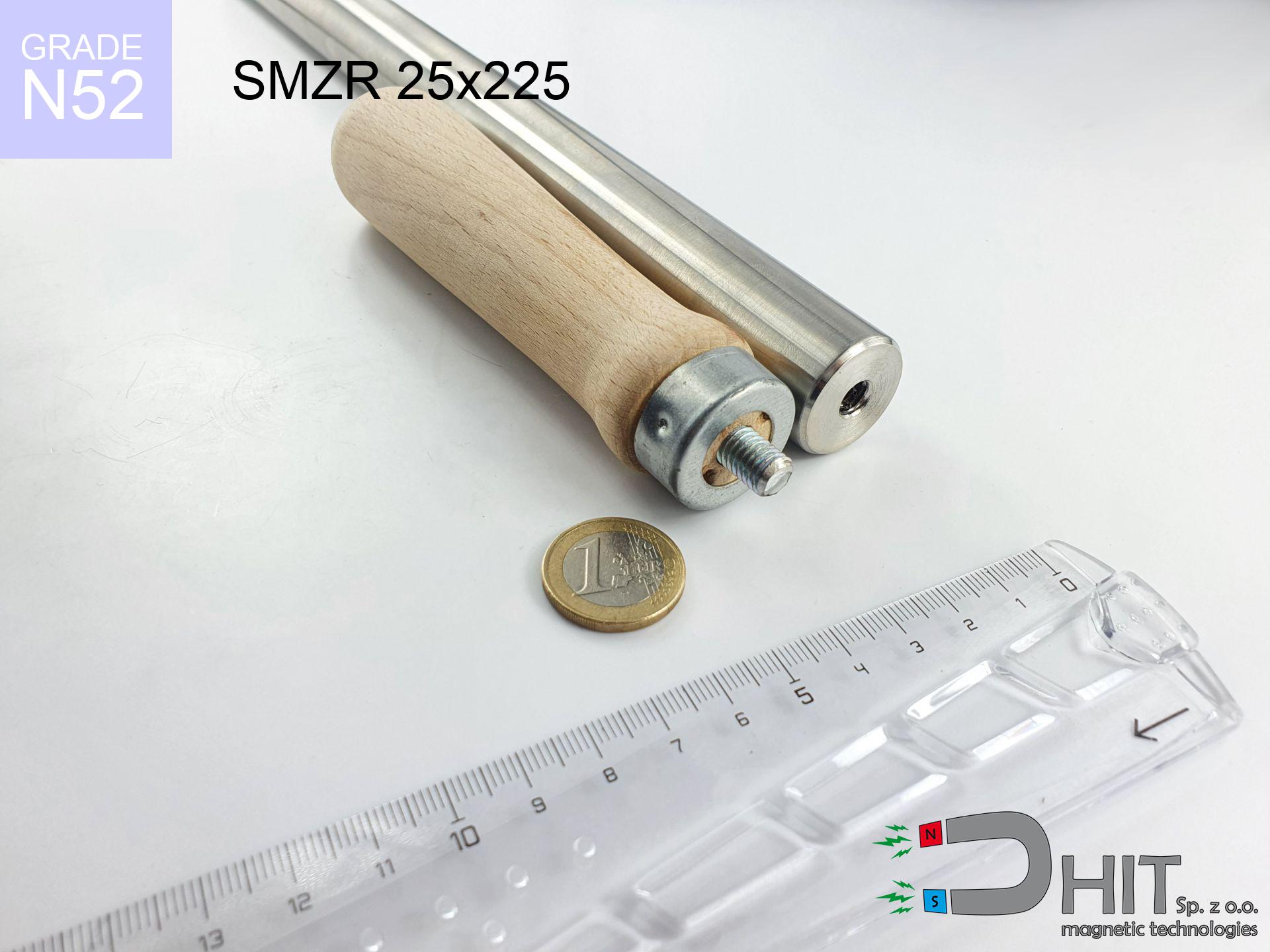XT-6 magnetyzery do silników - BENZYNA + POWIETRZE - XT-6 magnetizer
XT-6 magnetizer
Catalog no 070243
GTIN/EAN: 5906301812432
Weight
152 g
94.99 ZŁ with VAT / pcs + price for transport
77.23 ZŁ net + 23% VAT / pcs
bulk discounts:
Need more?
Pick up the phone and ask
+48 888 99 98 98
if you prefer get in touch using
inquiry form
our website.
Weight and appearance of magnets can be verified on our
power calculator.
Same-day shipping for orders placed before 14:00.
Technical - XT-6 magnetyzery do silników - BENZYNA + POWIETRZE - XT-6 magnetizer
Specification / characteristics - XT-6 magnetyzery do silników - BENZYNA + POWIETRZE - XT-6 magnetizer
| properties | values |
|---|---|
| Cat. no. | 070243 |
| GTIN/EAN | 5906301812432 |
| Production/Distribution | Dhit sp. z o.o. |
| Country of origin | Poland / China / Germany |
| Customs code | 85059029 |
| Weight | 152 g |
| Manufacturing Tolerance | ±1 mm |
Physical properties of sintered neodymium magnets Nd2Fe14B at 20°C
| properties | values | units |
|---|---|---|
| Vickers hardness | ≥550 | Hv |
| Density | ≥7.4 | g/cm3 |
| Curie Temperature TC | 312 - 380 | °C |
| Curie Temperature TF | 593 - 716 | °F |
| Specific resistance | 150 | μΩ⋅cm |
| Bending strength | 250 | MPa |
| Compressive strength | 1000~1100 | MPa |
| Thermal expansion parallel (∥) to orientation (M) | (3-4) x 10-6 | °C-1 |
| Thermal expansion perpendicular (⊥) to orientation (M) | -(1-3) x 10-6 | °C-1 |
| Young's modulus | 1.7 x 104 | kg/mm² |
Material specification
| iron (Fe) | 64% – 68% |
| neodymium (Nd) | 29% – 32% |
| boron (B) | 1.1% – 1.2% |
| dysprosium (Dy) | 0.5% – 2.0% |
| coating (Ni-Cu-Ni) | < 0.05% |
Ecology and recycling (GPSR)
| recyclability (EoL) | 100% |
| recycled raw materials | ~10% (pre-cons) |
| carbon footprint | low / zredukowany |
| waste code (EWC) | 16 02 16 |
Other deals
Strengths and weaknesses of Nd2Fe14B magnets.
Benefits
- They retain full power for nearly ten years – the drop is just ~1% (according to analyses),
- Magnets effectively protect themselves against demagnetization caused by ambient magnetic noise,
- Thanks to the smooth finish, the surface of nickel, gold-plated, or silver gives an professional appearance,
- Magnetic induction on the working part of the magnet remains maximum,
- Made from properly selected components, these magnets show impressive resistance to high heat, enabling them to function (depending on their shape) at temperatures up to 230°C and above...
- Thanks to freedom in forming and the capacity to modify to unusual requirements,
- Universal use in advanced technology sectors – they are utilized in HDD drives, drive modules, advanced medical instruments, and complex engineering applications.
- Thanks to efficiency per cm³, small magnets offer high operating force, with minimal size,
Disadvantages
- Susceptibility to cracking is one of their disadvantages. Upon intense impact they can fracture. We advise keeping them in a special holder, which not only secures them against impacts but also increases their durability
- We warn that neodymium magnets can lose their strength at high temperatures. To prevent this, we advise our specialized [AH] magnets, which work effectively even at 230°C.
- They oxidize in a humid environment - during use outdoors we advise using waterproof magnets e.g. in rubber, plastic
- We suggest a housing - magnetic mechanism, due to difficulties in producing threads inside the magnet and complex forms.
- Possible danger to health – tiny shards of magnets are risky, if swallowed, which becomes key in the context of child health protection. Furthermore, tiny parts of these magnets can complicate diagnosis medical after entering the body.
- Higher cost of purchase is one of the disadvantages compared to ceramic magnets, especially in budget applications
Holding force characteristics
Magnetic strength at its maximum – what affects it?
- using a plate made of low-carbon steel, serving as a ideal flux conductor
- possessing a massiveness of min. 10 mm to ensure full flux closure
- with an ideally smooth contact surface
- with zero gap (without coatings)
- under perpendicular force vector (90-degree angle)
- at temperature room level
Lifting capacity in practice – influencing factors
- Distance – existence of foreign body (rust, tape, gap) interrupts the magnetic circuit, which lowers power steeply (even by 50% at 0.5 mm).
- Load vector – highest force is reached only during perpendicular pulling. The force required to slide of the magnet along the plate is usually several times smaller (approx. 1/5 of the lifting capacity).
- Element thickness – for full efficiency, the steel must be adequately massive. Thin sheet restricts the lifting capacity (the magnet "punches through" it).
- Material type – ideal substrate is high-permeability steel. Cast iron may have worse magnetic properties.
- Surface condition – smooth surfaces ensure maximum contact, which improves force. Rough surfaces reduce efficiency.
- Temperature – temperature increase results in weakening of induction. Check the thermal limit for a given model.
Lifting capacity testing was conducted on a smooth plate of optimal thickness, under a perpendicular pulling force, in contrast under parallel forces the load capacity is reduced by as much as fivefold. Additionally, even a slight gap between the magnet and the plate decreases the lifting capacity.
Precautions when working with neodymium magnets
Combustion hazard
Fire hazard: Rare earth powder is explosive. Do not process magnets in home conditions as this may cause fire.
Warning for allergy sufferers
Nickel alert: The Ni-Cu-Ni coating contains nickel. If an allergic reaction occurs, immediately stop handling magnets and use protective gear.
Safe operation
Handle with care. Neodymium magnets act from a distance and connect with huge force, often faster than you can react.
Adults only
Product intended for adults. Small elements pose a choking risk, causing severe trauma. Keep out of reach of kids and pets.
Magnetic interference
A powerful magnetic field disrupts the functioning of compasses in smartphones and GPS navigation. Maintain magnets close to a smartphone to prevent damaging the sensors.
Crushing force
Large magnets can break fingers instantly. Never place your hand betwixt two strong magnets.
Medical implants
Medical warning: Strong magnets can turn off heart devices and defibrillators. Do not approach if you have electronic implants.
Risk of cracking
Despite the nickel coating, neodymium is brittle and not impact-resistant. Do not hit, as the magnet may shatter into sharp, dangerous pieces.
Demagnetization risk
Standard neodymium magnets (grade N) lose power when the temperature goes above 80°C. This process is irreversible.
Threat to electronics
Avoid bringing magnets close to a purse, laptop, or screen. The magnetic field can irreversibly ruin these devices and wipe information from cards.








